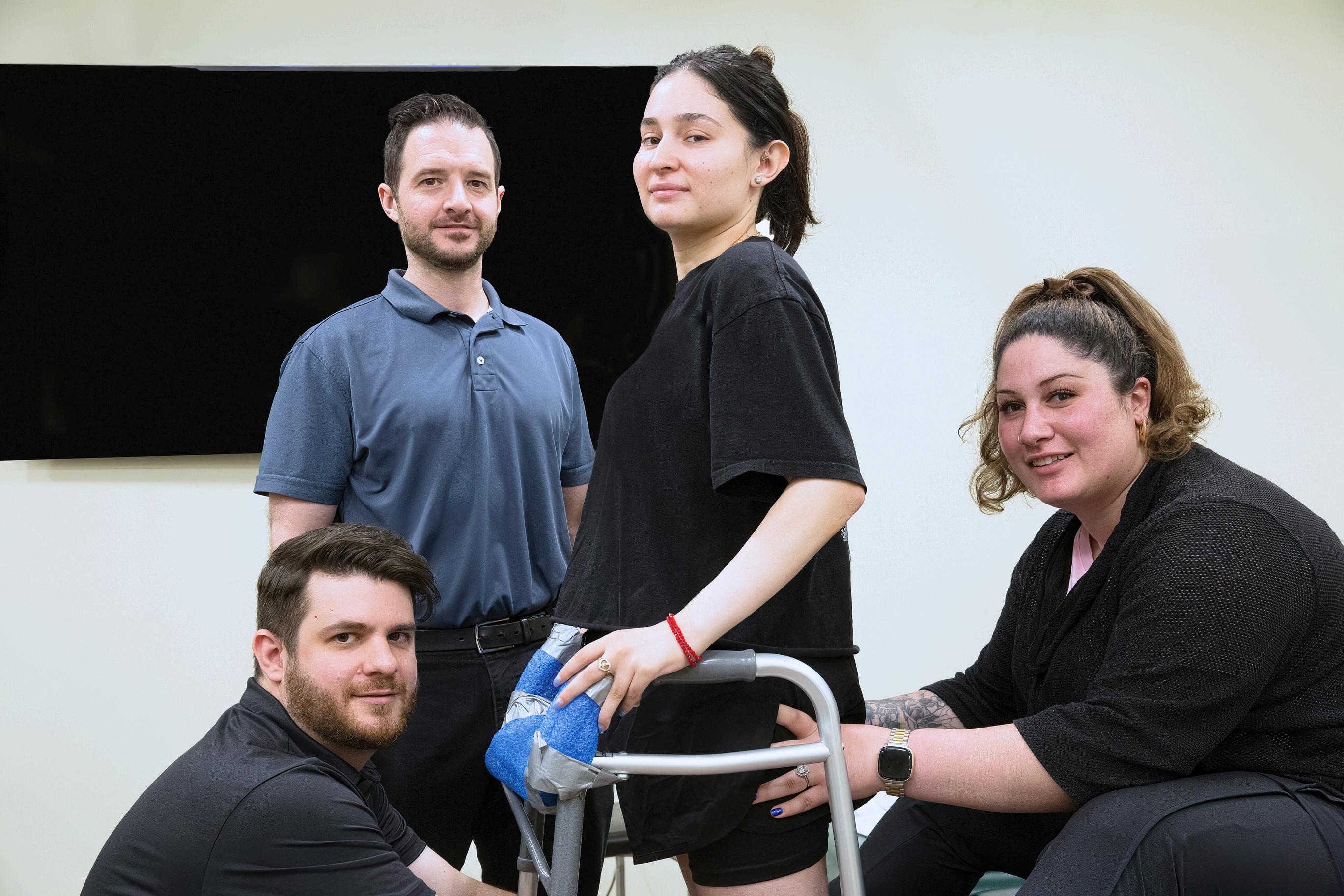
Studies from the
Tim and Caroline Reynolds Center for Spinal Stimulation at Kessler Foundation


Tim and Caroline Reynolds Center for Spinal Stimulation at Kessler Foundation
Spinal cord epidural stimulation coupled with task-specific training help some people with spinal cord injury stand again.

For people with severe cervical spinal cord injury, standing without help was once considered impossible. But some of the latest research from Kessler Foundation shows that targeted spinal cord epidural stimulation combined with focused rehabilitative training can make independent standing a reality for some.
“After several months of task-specific training and spinal cord epidural stimulation, many participants were able to stand with little or no manual support. Some could even sustain their full weight without any assistance ” says lead author Claudia A Angeli, PhD, assistant director, Tim and Caroline Reynolds Center for Spinal Stimulation. “We’re developing ways to help people with complete paralysis regain the ability to stand.
(Continued, next page)
Spinal stimulation and focused rehab training restore hope and standing for some.
Participants who completed more training sessions experienced greater improvements than those with fewer sessions.
Spinal cord epidural stimulation: Electrodes implanted near the spine send electrical signals to “wake up” nerve pathways below an SCI.
Activity-based recovery training: Rehab focused on rebuilding function through repetition in conjunction with spinal cord epidural stimulation.


(Continued from first page)
Research shows that weightbearing exercises help people with spinal cord injury improve health, build muscle, and support better posture and circulation.”
Spinal cord epidural stimulation uses gentle electrical signals to “reawaken” the communication between the brain and the body
Electrodes placed near the spine help muscles respond to movement even when signals from the brain can’t travel normally past the injury. When combined with targeted, focused training, this stimulation helps the nervous system relearn how to support standing and posture.
The study followed 30 people with cervical spinal cord injury who were unable to stand independently at the start of the intervention. Each person was surgically implanted with a device to deliver spinal stimulation. Afterwards, they started a special program called activity-based recovery training
During the intervention:
Participants were asked to stand for two hours a day, five days a week, for either 80 or 160 sessions, depending on which group they were placed in Stimulation was adjusted to help participants activate their muscles to extend their knees, hips, and trunk without help
Different types of stimulation were tested during the study some concentrated on blood pressure support, others on voluntary movement. All groups combined their training with standing-specific stimulation over time
All 30 participants were able to stand unassisted with at least one leg
16 people could keep their hips, knees, and upper body straight without external support
People who trained for 160 sessions showed even more progress than those who trained for 80 sessions
Participants who began with movement-focused stimulation made faster progress than those who started with cardiovascularfocused stimulation
Learn more:
This study, “Activity-based recovery training with spinal cord epidural stimulation improves standing performance in cervical spinal cord injury,” was published in the Journal of NeuroEngineering and Rehabilitation (2025).
To read the full study, scan the QR code or visit: doi.org/10.1186/ s12984-02501636-6

Eagle Rock Avenue,
| East Hanover, NJ 07936-3147 973 324 8362 | KesslerFoundation org facebook com/KesslerFoundation | twitter com/KesslerFdn | instagram com/kesslerfdn linkedin.com/company/the-kessler-foundation | soundcloud.com/kesslerfoundation